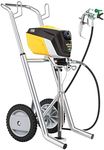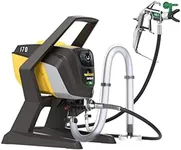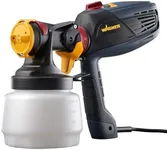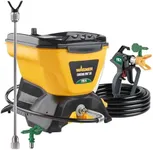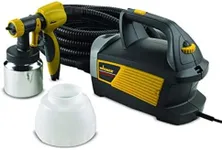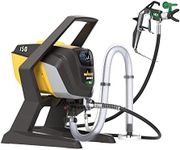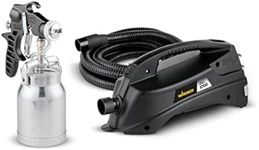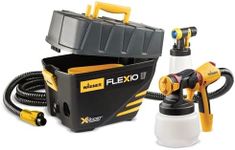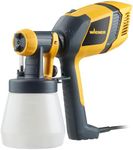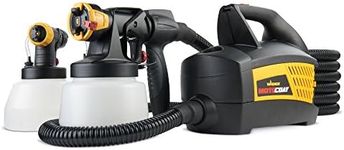Buying Guide for the Best Wagner Paint Sprayers
Choosing a paint sprayer can make your painting projects faster, smoother, and more professional-looking compared to using brushes or rollers. The right paint sprayer for you depends on the type of projects you plan to tackle, the materials you want to spray, and how often you expect to use the tool. Understanding the key features and specifications will help you select a sprayer that matches your needs and ensures a satisfying painting experience.Type of SprayerPaint sprayers generally come in three main types: airless, HVLP (High Volume Low Pressure), and handheld/cup sprayers. Airless sprayers are powerful and best for large surfaces like walls and fences, delivering paint quickly and evenly. HVLP sprayers are more precise and create less overspray, making them ideal for furniture, cabinets, and detailed work. Handheld or cup sprayers are compact and convenient for small projects or touch-ups. To choose the right type, think about the size and detail of your typical projects—large, flat areas benefit from airless, while smaller or more detailed work is better suited to HVLP or handheld models.
Flow Rate (Gallons Per Minute or GPH)Flow rate tells you how much paint the sprayer can apply in a given time, usually measured in gallons per minute (GPM) or gallons per hour (GPH). A higher flow rate means you can cover large areas faster, but it may be harder to control for detailed work. Lower flow rates are better for precision and smaller projects. If you plan to paint big surfaces like walls or fences, a higher flow rate is helpful. For furniture, crafts, or trim, a lower flow rate gives you more control and a finer finish.
Adjustable Spray PatternsMany paint sprayers allow you to change the spray pattern—such as horizontal, vertical, or circular. This feature is important because it lets you adapt the spray to different surfaces and shapes, improving coverage and reducing waste. Wide patterns are good for broad surfaces, while narrow or circular patterns help with corners and detailed areas. If you expect to work on a variety of projects, look for a sprayer with easy-to-adjust spray patterns so you can switch as needed.
Nozzle SizeThe nozzle size determines the thickness of the spray and the types of materials you can use. Larger nozzles handle thicker paints and coatings, while smaller nozzles are better for thin materials like stains or varnishes. Some sprayers come with interchangeable nozzles for flexibility. If you plan to use different types of paint or coatings, choose a sprayer that supports multiple nozzle sizes so you can match the nozzle to your material.
Ease of CleaningPaint sprayers need to be cleaned after each use to keep them working well and to prevent clogs. Some models are designed for quick and easy cleaning, with features like detachable parts or direct hose connections for flushing out paint. If you want to save time and effort, look for a sprayer that is known for easy maintenance. This is especially important if you plan to use the sprayer frequently or switch between different paint colors.
Paint Container CapacityThe size of the paint container affects how often you need to stop and refill during a project. Larger containers are convenient for big jobs, reducing interruptions, but they can make the sprayer heavier and harder to handle. Smaller containers are lighter and easier to maneuver, which is helpful for detailed or overhead work. Consider the typical size of your projects and your comfort with handling a heavier tool when choosing the right container size.
